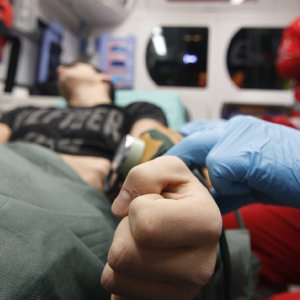The Dangers and Long-Term Risks of an Opioid Addiction

It is no secret our county is in the midst of a rising opioid epidemic and an ongoing drug crisis that has seen overdoses rise on an annual basis, and the pandemic will undoubtedly contribute to bleak statistics when the numbers are calculated for 2020. Opioid addiction continues to be a huge struggle for so many people due to the highly addictive nature of opioids and continued indulgence in using opioid prescriptions as the primary therapy for pain management, even minor and temporary pains such as prescribing Percocet for a simple dental procedure. The chemical hooks and painful withdrawal effects can make it extremely difficult for a person to simply quit on their own and thus a lot of people struggle with opioid addiction and become addicted before even realizing what is happening. This puts the addicted person in a very vulnerable position and causes them to seek opioid street drugs like heroin when they can no longer get an opioid prescription.
It is an insidious drug that, especially when abused and not properly administered, can really dig an unsuspecting person into the deep depths of addiction and potentially down a dark path once thought unfathomable. It is a shame that opioids have the power to do this and that what is perceived as an innocent pain medication prescription could lead to a full-blown drug addiction and a destructive path that inevitably leads to larger doses or drug seeking on the streets. A lot of people are completely unaware and naive to the transition between using a painkiller thought to be for a temporary, physical, and necessary need to suddenly becoming completely dependent on it and not being able to go without it. Like any addiction, opioid addiction can be sneaky. Some warning signs to look out for if you suspect a loved one of having an opioid addiction are things like drowsiness, sleeping more than usual, abandoning responsibilities, lowered motivation, small pupils, and shallow breathing. Intensified flu-like symptoms are also a common side effect of somebody withdrawing from opiates.
There are also long-term effects and dangers to using opioids even aside from addiction, such as how they can harmfully impact the brain. Not only from overdosing, but also toxic doses of opioids can have a harmful and negative effect on the brain with lasting effects. Hyperalgesia is another troubling condition that somebody using opioids long-term can run into. Hyperalgesia is a condition where there is an increased sensitivity to pain. This could also create a situation where the area that someone was experiencing pain broadens and/or new pain develops. Toxic Brain Injury is a condition where damage is done to the brain due to an opioid overdose. Due to oxygen deprivation during an overdose, the brain can get damaged and this can lead to severe disability.

When more serious brain damage occurs, the effects could be like a stroke. The effects are:
- Memory Loss
- Vision and Hearing Loss
- Depression
- Confusion
- Irritability
- Coordination problems
- Confusion
- Trouble Reading or Writing
There are many factors that contribute to the degree in which opioids are harmful. An opioid addiction can greatly impact a person’s life in a very negative way and can lead to overdose and Toxic Brain Injury. It goes without saying that someone who becomes dependent and is addicted to opioids has an especially hard time getting off them, which is why seeking treatment is so important.
Without the proper treatment and care, a person may inadvertently put off successfully overcoming an addiction to opiates for months and years due to a variety of factors. First and foremost, withdrawal from heavy opiate use can be an extremely painful and uncomfortable experience. A person can tell themselves with all the sincerity in the world that tomorrow will be the day that their addiction ends and that they are done with the opiates. Then tomorrow comes and then the next day, and as the sickness intensifies within the body from withdrawal, the powerful thoughts that are desperate for relief drive a person right back to using. It becomes a vicious cycle where a person will plan out their home detox and make it a few days before folding and using again. Over and over. The only thing that remains constant is that the person wants to quit, and with each failing attempt falls further down the rabbit hole into the depths of feeling like a failure and hopelessness. But that is the addiction talking, there is hope and the proper care and treatment can be found if a person is willing to take that step.


